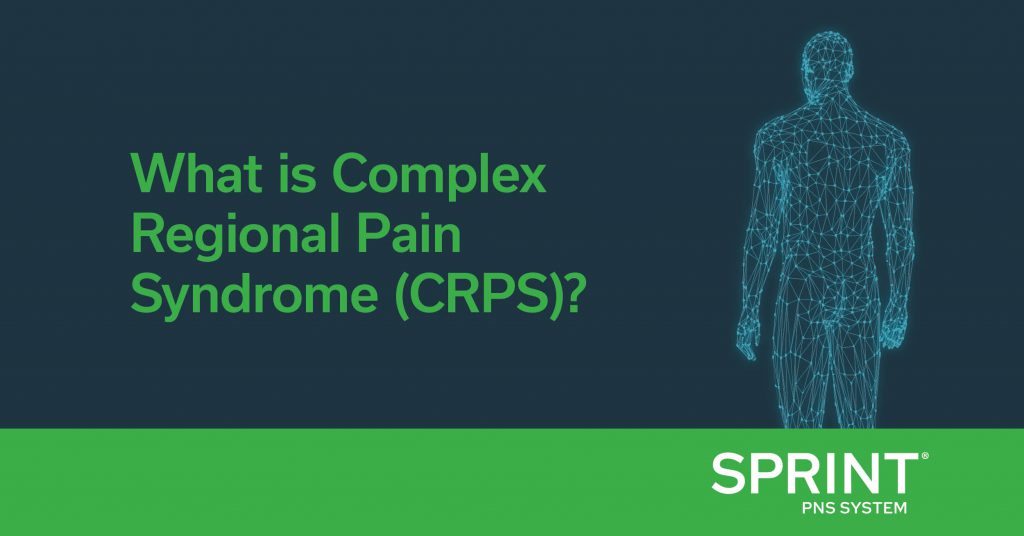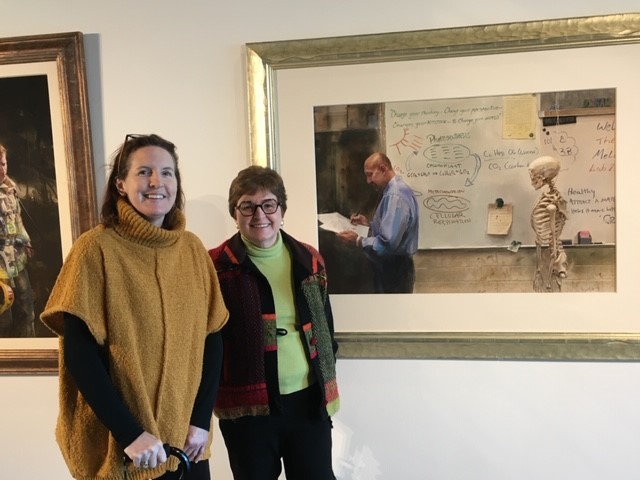
What is Complex Regional Pain Syndrome (CRPS)?
Complex regional pain syndrome, or CRPS, is a chronic pain condition that usually affects one limb following a trauma or an injury. CRPS often presents in an arm, leg, hand or foot. It is believed to be caused by damage to (or malfunction of) both the peripheral nervous system (the nerves that send signals to the brain and spinal cord) and central nervous system (the brain and spinal cord).
CRPS most commonly affects people ages 20-35 and has been shown to be more prevalent in women than men. [1]
There are two types of CRPS, both have similar signs and symptoms, but different causes:
- Type 1 –This type occurs after an illness or injury that did not directly damage your nerves. This type is also known as reflex sympathetic dystrophy syndrome.
- Type 2 – This type occurs after a distinct nerve injury. This was formerly called Causalgia.
What Are the Symptoms of CRPS?
Symptoms of CRPS can vary in severity and duration – so each person may have different presentations. Some cases of CRPS are mild and may eventually go away while others are more severe and could result in disability.
Symptoms of complex regional pain syndrome may include:
- Prolonged, severe pain that often feels like “burning” or like “pins and needles.”
- The pain may be constant or come and go.
- Pain may spread to the entire area of the affected limb, or in rare cases, travel to the opposite limb. This is true even if the associated injury involved only a small part of a limb (e.g., a finger on an arm).
- Changes in skin temperature or skin color of the affected limb. (The limb could feel warmer or cooler, and the skin could become blotchy, blue, purple, pale or red.)
- Swelling of the affected limb.
- Changes in skin texture – could become shiny and thin
- Abnormal sweating pattern in the affected area or surrounding areas
- Changes in nail and/or hair growth patterns
- Stiffness in affected joints and problems coordinating muscle movement
- Abnormal movement in the affected limb such as tremors, jerking or fixed abnormal posture
Overall, the biggest indicator for CRPS is continuous, intense pain that worsens over time.
SPRINT PNS May Offer a CRPS Pain Relief Option
There is no cure for CRPS, so the goal of treating CRPS is to relieve painful symptoms. A multitude of treatments are available, including a peripheral nerve stimulation (PNS) device called the SPRINT® PNS System. SPRINT PNS is a breakthrough neuromodulation treatment that’s designed to provide sustained pain relief for chronic and acute pain in the back and/or extremities. It doesn’t require surgery or a permanent implant and is drug-free.
SPRINT PNS helps patient find pain relief from CRPS in her shoulder, arm, and hand
Kim had developed CRPS pain from her shoulder to hand after a hemorrhagic stroke. Fortunately, her interventional pain physician recommended the SPRINT PNS System.
Below is a quick excerpt, and you can read Kim’s full story here.

“The pain was excruciating and ‘felt like fireworks running up and down my arm.’ The pain significantly impacted her mobility, and as a result, Kim’s ability to perform many of the exercises in PT and OT were limited. It was hard just to lift her arm. In July 2019, her pain physician, Dr. Costello of Pain Clinic in Charlotte recommended she have SPRINT PNS. The SPRINT device was placed that month. Kim reports that ‘the pain went away the very next day. I was worried about having it removed after the 60-day treatment period, but the pain has gone away and stayed away.’” *
Kim is just one patient who has benefited from the SPRINT PNS System. Read more patient stories here.
Ask Your Pain Physician if SPRINT PNS May Work for You
SPRINT PNS has been studied extensively for low back pain, shoulder pain, post-amputation pain, and chronic and acute post-operative pain, and is cleared for use up to 60 days. The SPRINT PNS System may be a viable option for treating your chronic pain due to CRPS.
If you are suffering from CRPS pain talk with your pain physician today to see if SPRINT PNS may be an option for you. In the meantime, feel free to learn more here.


